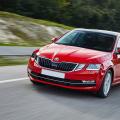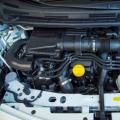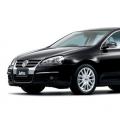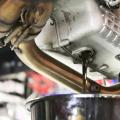To begin with, the situation on the modern new car market has changed noticeably over the past 15-20 years. Changes in the auto industry affected both performance, equipment level and solutions in terms of active and passive safetyand the device of power units. Those familiar with gasoline with one or another displacement, which used to be actually an indicator of the class and prestige of a car, are being actively replaced today.
In the case of turbo engines, engine displacement has ceased to act as a basic characteristic that determines power, torque, acceleration dynamics, etc. In this article, we intend to compare engines with a turbine and atmospheric versions, as well as answer the question of what is the fundamental difference between atmospheric and turbocharged counterparts. In parallel, the main advantages and disadvantages of turbocharged engines will be analyzed. Also, as a result, an assessment will be given whether it is worth buying new and used gasoline and diesel cars with a turbocharged engine.
Read in this article
Turbocharged engines and "aspirated": the main differences

First, a little history and theory. The operation of any internal combustion engine is based on the principle of combustion of a fuel-air mixture in a closed chamber. As you know, what more air manages to be fed into the cylinders, the more fuel is burned in one cycle. The amount of energy released, which pushes, will directly depend on the amount of burned fuel. In atmospheric engines, air intake is due to the formation of a vacuum in the intake manifold.
In other words, the motor literally "sucks" into itself outside air on the intake stroke independently, and the volume of the fitted air depends on the physical volume of the combustion chamber. It turns out that the larger the engine displacement, the more air it can fit in the cylinders and the more fuel it can burn. As a result, the power of the atmospheric internal combustion engine and the torque are highly dependent on the volume of the engine.
A fundamental feature of supercharged engines is the forced air supply to the cylinders under a certain pressure. This solution allows the power unit to develop more power without the need to physically increase the working volume of the combustion chamber. We add that air injection systems can be either.
In practice, it looks like this. For getting powerful motor you can go in two ways:
- increase the volume of the combustion chamber and / or make an engine with a large number of cylinders;
- supply air under pressure to the cylinders, which eliminates the need to increase the combustion chamber and the number of such chambers;
Taking into account the fact that for each liter of fuel, about 1m3 of air is required for efficient combustion of the mixture in an internal combustion engine, car manufacturers around the world have long followed the path of improving atmospheric engines. Atmomotors were the most reliable type of power units. The compression ratio increased in stages, while the engines became more resistant to. Due to the appearance of synthetic motor oils friction losses were minimized, engineers learned, the introduction made it possible to achieve high-precision fuel injection, etc.
As a result, large displacement V6 to V12 engines have long been the benchmark for performance. Also, do not forget about reliability, since the design of atmospheric engines has always been a time-tested solution. In parallel with this, the main disadvantages of powerful atmospheric units are rightly considered a large weight and increased fuel consumption, as well as toxicity. It turns out that at a certain stage in the development of engine building, an increase in the working volume turned out to be simply inappropriate.
Now about the turbo engines. Another type of aggregate against the background of popular "aspirated" units has always remained less common aggregates with a "turbo" attachment, as well as compressor engines. Such internal combustion engines appeared quite a long time ago and initially followed a different path of development, having received systems for forced air injection into engine cylinders.
It should be noted that a significant popularization of supercharged engines and the rapid introduction of such units into broad masses has long been hampered by the high cost of supercharged cars. In other words, supercharged engines were rare. This is explained simply, since at an early stage, cars with a turbo engine, mechanical compressor or a simultaneous combination of two solutions at once were often put on expensive sports models auto.
The reliability of the units was also an important factor. of this type, which demanded increased attention during the maintenance process and were inferior in terms of motor resource to atmospheric internal combustion engines. By the way, today this statement is also true for engines with a turbine, which are structurally more complicated than compressor analogs and have gone even further from atmospheric versions.
Advantages and disadvantages of a modern turbo engine


Before we start analyzing the pros and cons of a turbo engine, I would like to once again draw your attention to one nuance. According to marketers, the share of new turbocharged cars sold today has increased significantly.
Moreover, numerous sources emphasize that turbo engines are more and more crowding out "aspirated" ones, motorists often choose "turbo", since they consider atmospheric engines a hopelessly outdated type of internal combustion engine, etc. Let's figure out if the turbo engine is really so good.
Pluses of a turbo engine
- Let's start with the obvious pluses. Indeed, the turbo engine is lighter in weight, less in displacement, but at the same time produces a high maximum power... Also, turbine motors provide high torque, which is available on low revs and is stable over a wide range. In other words, turbo engines have a flat torque shelf, accessible from the very bottom up to relatively high revs.
- In an atmospheric engine, there is no such flat shelf, since the thrust directly depends on the engine speed. At low revs, the atmomotor usually produces less torque, that is, it needs to be spinned up to obtain acceptable dynamics. On high revs the motor reaches its maximum power, but the torque is reduced as a result of the resulting natural losses.
- Now a few words about the efficiency of turbo engines. Such motors really consume less fuel compared to atmospheric aggregates under certain conditions. The fact is that the process of filling the cylinders with air and fuel is completely controlled by electronics.
Features of car operation: how to turn off the engine correctly and whether it is possible to turn off when the fan is running. Why can't you turn off the turbo engine right away?
- List of the most reliable gasoline and diesel engines: 4-cylinder power units, in-line 6-cylinder internal combustion engines and V-shaped power plants... Rating.



Long-awaited theme: naturally aspirated or turbocharged engine. Many motorists are interested in this burning issue. What to choose and what to ride as long as possible.
The question is ambiguous and requires a detailed understanding of the pros and cons of those and other motors.
And so, atmospheric or turbocharged engine... If we take initially their difference, then the engine does not differ structurally. The only difference is that an increased air flow is added to the intake system and, accordingly, the fuel supply changes in the direction of its increase.
You can install a pressurization system on atmospheric, that is, a turbine that enhances the incoming air flow into the intake system, we will correct the fuel supply, here you have a turbocharged engine.
Let's take a deeper look at what is atmospheric and turbocharged.
Atmospheric engine
What does atmospheric mean? As mentioned above, the naturally aspirated engine does not have a system for forcing air into the intake system.
Air is sucked in naturally, intake pistons suck in air, creating negative pressure in the intake phase... In this cycle, together with the air, the fuel is sucked in, forming fuel mixturerequired for a particular mode of motor operation.
For good purging, as they call good filling with the working mixture and exhaust gas removal, four valves per cylinder are installed on modern atmospheric engines. Two inlet and two outlet.
In this case, the maximum efficiency of the motor is ensured, relative to its cylinder volume and, accordingly, maximum power.
Pros of an atmospheric engine:
- increased resource;
- simplicity of design;
- consumption of low-octane fuel grades;
- less oil consumption;
- greater mileage before oil change;
- warms up the engine faster.
Cons of an atmospheric engine:
- less power;
- high fuel consumption;
- less environmentally friendly.
Turbocharged engine
As mentioned above, this is an atmospheric engine with a turbine installed on it. This is roughly how you can imagine a turbocharged engine. But installing a turbine is simply not enough.
The turbine is powered by motion exhaust gasesspinning the shaft with the impeller to frantic turns... At the other end of the turbine shaft is an impeller, the so-called compressor, which supplies air under pressure to the intake manifold.
The compressor pumps air, it enters the cylinders much more than atmospheric engine... Due to this, it becomes possible to create a ready-made combustible mixture several times more in one intake stroke... In a turbocharged, of course, when this mixture is burned, more energy is released, the result is a sharp increase in power.
The crankshaft, camshafts, connecting rods, pistons, valves in a turbocharged engine remain the same as on an atmospheric engine.
In order for a turbocharged engine to run stably and for a long time, many modifications and improvements are required related to turbine lubrication and cooling of the supplied air.
Turbocharged engines are more revving, more powerful, and work at higher temperatures.

In addition to the turbine, the turbocharged engine is complemented by an additional radiator (), which serves to cool the air entering the intake system.
An intercooler is necessary so that the mixture does not enter the cylinders when it is very hot, in order to save it from detonation and overheating.
Pros of a turbocharged engine:
- increased power;
- reduced size and weight;
- reduced total fuel consumption.
Cons of a turbocharged engine:
- reduced resource;
- requires quality oil;
- requires high quality fuel;
- increased oil consumption;
- poor heating;
- the need to change the oil more often.
Summing up
And so, atmospheric engine or turbocharged. From the factors considered, we draw a conclusion.
For those who do not need extra troubles with frequent replacements and topping up oil, more cheap service... For those who do not need to pump in, accelerate quickly, for those who love the measured principle of driving a car, they will be more satisfied with the atmospheric one.
Although now non-turbocharged engines are quite lively and can be driven quite well.
Those who do not hesitate to take care of their iron horse, those who respect powerful cars, and does not count with increased costs for car service. For those who love from a place with a slipper to the floor and overload as in an airplane, then definitely, only a turbocharged engine.
Popular statistics say that a turbocharged engine costs about three times more to operate.
So good luck with your choice!

All drivers have heard that most modern cars manufacturers offer in a version with turbocharged engines. Such motors have both supporters and opponents. On the Internet, on various sites and forums, you can find a bunch of all kinds of myths about why you should not buy turbocharged engines. In fact, many of the common rumors about such motors are exaggerated or no longer relevant for modern powertrains. In this article, we will consider what turbocharged engines are, and what advantages and disadvantages they actually have.
Table of contents:What is a turbocharged engine
 The turbocharged engine, without undue modesty, can be called almost the main discovery of modern engine production. The creators of turbocharged engines set themselves the task of increasing the engine power, but at the same time maintaining the same displacement. Plus to everything, since such engines were supposed to be installed on mass cars, it was necessary to take into account the factor of their reliability.
The turbocharged engine, without undue modesty, can be called almost the main discovery of modern engine production. The creators of turbocharged engines set themselves the task of increasing the engine power, but at the same time maintaining the same displacement. Plus to everything, since such engines were supposed to be installed on mass cars, it was necessary to take into account the factor of their reliability.
In a turbocharged engine air-fuel mixture is sent to the combustion chamber under pressure. Due to this, it is possible to increase the torque and overall engine power.
The turbine is installed, including on low-volume engines, where low fuel consumption is important, and modern standards require increased environmental friendliness from such engines. The turbine in such engines is driven by the residual energy that remains in the exhaust. Exhaust gases, among other things, are responsible for the formation of forced pressure in the cylinders, where the air-fuel mixture is prepared for further work.
Please note: The turbines were originally installed on diesel enginessince, due to design features, their use on gasoline units reduced reliability as well as increased cost. But later the turbine design was improved, which made it possible to use it, including on gasoline engines in the mass segment.
Pluses of turbocharged engines
Turbocharged motors have the following advantages for which motorists choose them:
- Increased power with the same volume. Accordingly, the dynamic performance of a car with a turbocharged engine will be better than a car with a naturally aspirated engine of the same size;
- Better environmental properties, and at the same time, greater efficiency. A turbocharged engine is better from an environmental point of view, since the fuel combustion is more complete, and less exhaust gases and harmful impurities are sent to the atmosphere;
- A turbocharged engine runs quieter than a naturally aspirated engine;
- Choice. Now turbocharged engines are available, both gasoline and diesel;
- The presence of an intercooler. The incoming air is cooled thanks to the intercooler, which has a positive effect on the efficiency of fuel use and the safety of the units;
- For quick start from a place there is no need to greatly increase the speed.
Cons of turbocharged engines
The turbocharged engines also have obvious disadvantages, which for many drivers outweigh the existing advantages:

Turbocharged motor at correct operation able to serve no less than atmospheric.
A real breakthrough in automotive world became the invention of the turbine, which can be present (gasoline and diesel). This discovery prompted the designers to be able to increase the power without the need to increase the working volume. So a turbocharged engine appeared, the pros and cons of which will be studied in detail in this article.
What to expect from turbocharged engines
In such power mechanism a mixture of fuel and air is supplied to the combustion chamber under pressure, which simultaneously increases the torque and power of the power unit. And if you use low-volume engines, you can achieve economical and high environmental friendliness. The turbine is driven by the residual energy that the exhaust gases leave behind. They are also responsible for creating forced pressure in the cylinders, inside which the fuel is prepared for further work.
 Turbine operation scheme
Turbine operation scheme What has earned the favor of the drivers
The advantages of power turbocharged car units are so significant and serious that many car owners, no doubt, choose cars with just such a system.
- Increased liter capacity, which leads to high dynamics.
- The turbine is designed in a special way. All its features are aimed at increasing the power indicators of the power unit.
- Turbine versatility that works great on gasoline and diesel units.
- The presence of an intercooler - a mechanism for cooling air inside turbocharged systems.
- The fuel in the cylinders is burned so completely and efficiently that the environmental performance is very high.
- Quiet work.

What you have to put up with
But is everything really so rosy and beautiful? Of course not, since there are also disadvantages, they are significant and serious, and you cannot ignore them.
- It is worth considering the disadvantages of engines with a turbine from the price issue. For example, the closest brothers - atmospheric units have more low cost... The difference can be up to 20%. The costly capital investment does not end with user costs. You cannot do without a special service, and you will also have to pay considerable sums for this.
- Active work for a long time should alternate with resting the turbine without shutting down the engine. This will take about 10 minutes. You will forget to let the turbine run on idlingwill often have to deal with repairing the heart of your car.
- Not every fuel can be used in a car with a turbocharged heart. Only high-octane gasoline and very high quality - the choice is small and strictly limited. Oil is poured not only into the engine, but also into the turbine, and bad gasoline will force to repair the power unit after more than 100 km.
- Fuel consumption is not the most economical, which is compensated by the generation of high power.
- The disadvantages of an engine with a turbine are also associated with a thermal regime, the parameters of which are close to extreme. As a result, all nodes experience increased stress, which does not in the best way affect the overall state of the mechanism. Its durability suffers significantly.
- Careful monitoring is required, which debris results in poor performance.
Humanity will have to wait a long time for the moment when the discovery will take place perpetual motion machine, perfect, perfect and absolutely economical. In the meantime, we have to be content with what engineers from leading car companies... The advantages of turbocharged engines are so serious and significant that even numerous disadvantages cannot overshadow them. These powertrains are undergoing improvements and upgrades, becoming more practical, economical and durable.




